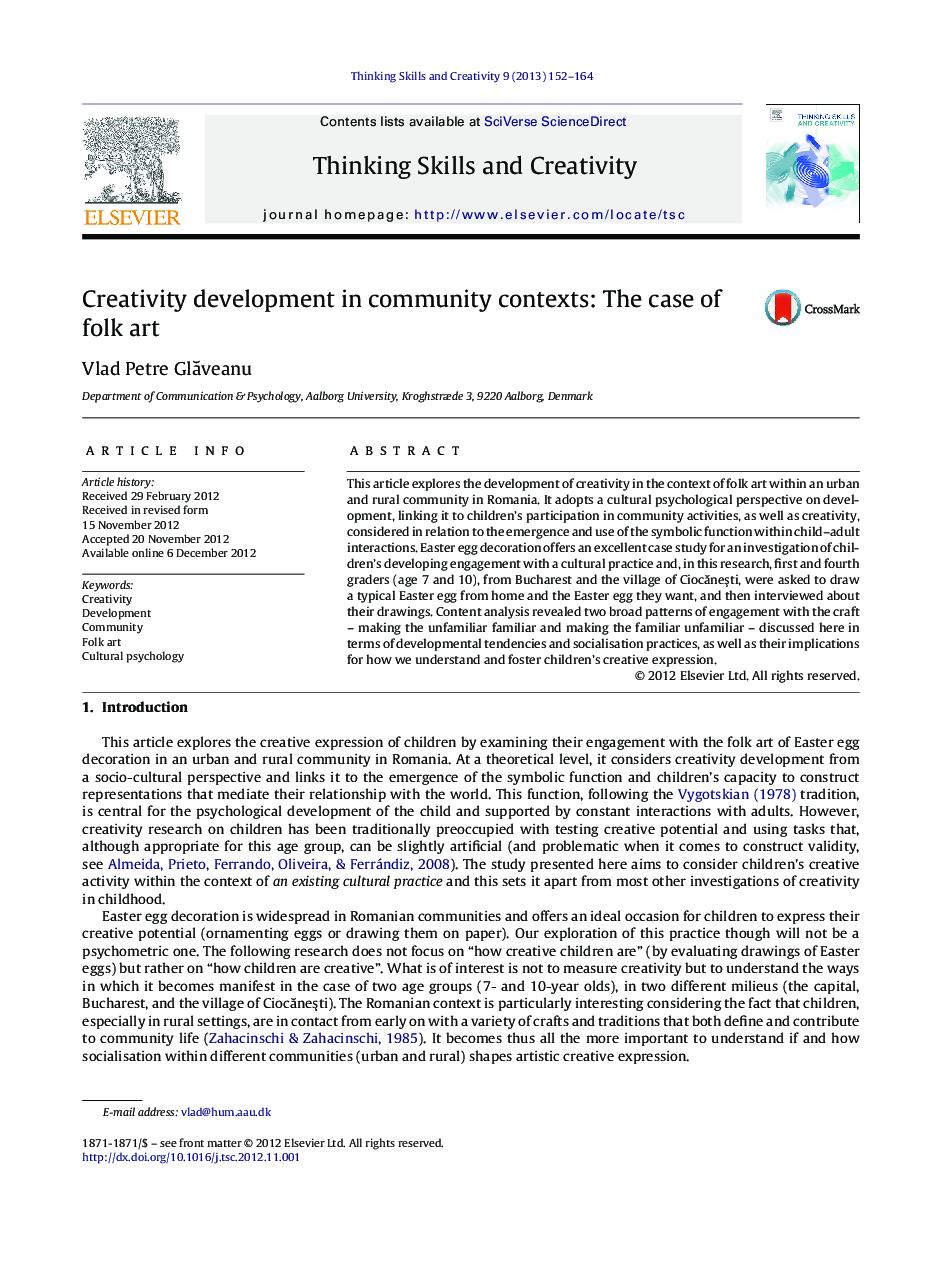| Article ID | Journal | Published Year | Pages | File Type |
|---|---|---|---|---|
| 375694 | Thinking Skills and Creativity | 2013 | 13 Pages |
This article explores the development of creativity in the context of folk art within an urban and rural community in Romania. It adopts a cultural psychological perspective on development, linking it to children's participation in community activities, as well as creativity, considered in relation to the emergence and use of the symbolic function within child–adult interactions. Easter egg decoration offers an excellent case study for an investigation of children's developing engagement with a cultural practice and, in this research, first and fourth graders (age 7 and 10), from Bucharest and the village of Ciocăneşti, were asked to draw a typical Easter egg from home and the Easter egg they want, and then interviewed about their drawings. Content analysis revealed two broad patterns of engagement with the craft – making the unfamiliar familiar and making the familiar unfamiliar – discussed here in terms of developmental tendencies and socialisation practices, as well as their implications for how we understand and foster children's creative expression.
► The development of creativity takes place in community contexts. ► Folk art offers children an opportunity to creatively engage with a cultural practice. ► Both age and social context shape creative expression. ► Lower age children tend to be creative by making the unfamiliar familiar. ► Higher age children tend to be creative by making the familiar unfamiliar.
